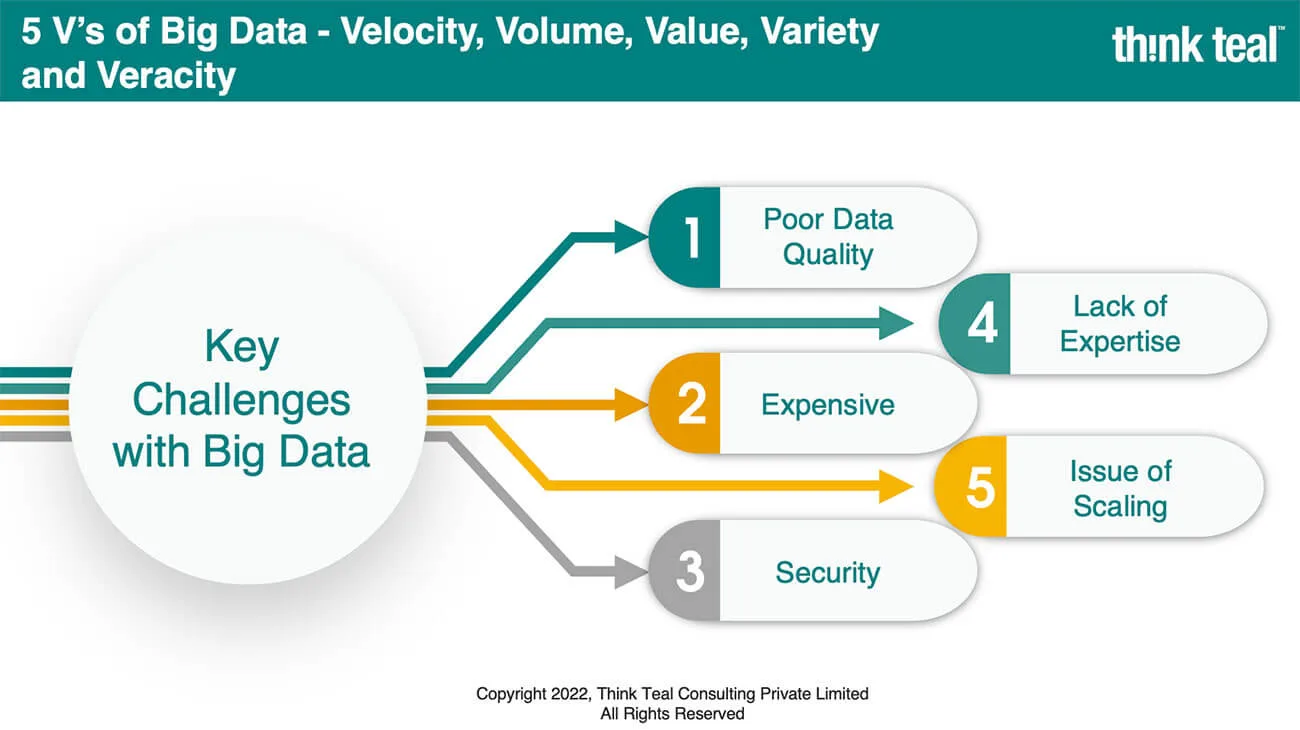5 V's of Big Data - Velocity, Volume, Value, Variety and Varacity
Cloud Computing, IoT, Big Data, Analytics – These are some of the most trending terms in the Enterprise Technology space. While they are unique areas, their interdisciplinary nature makes them tick all the necessary boxes of today’s enterprise requirements.
Big Data is a relatively new concept with its share of business benefits and challenges. There is no denying this is an expensive area to invest in, and the returns can take time. Not to mention all the other types of challenges that have been mentioned above.
While many large organizations might have the wherewithal, it is never an easy task to undertake. There are so many moving parts in a Big Data exercise. In most cases, the biggest hurdle lies in the quality of the data. Studies indicate that data scientists take as much as 60-70% to curate before the data can be even used and further analyzed. A direct analogy of this could be seen in the world of clinical research, where gestation periods are very long with no guarantees of success. But then, in both the scenarios, the far-reaching benefits have propelled both industries forward, trying to navigate past all the hindrances that come their way. Another issue that deserves attention is the value attached to the data in question. Gaining a view of ROI for such complex projects is not an easy task.
Quality workforce has been an issue. This translates to a big job market for people with the requisite skill set. But a more systematic approach to this is how the entire organization views data. Big Data can’t be within the confines of just a few; it has to be a collective effort. On a short-term basis, one can outsource the function to an analytics company, but the ideal route would be to develop the expertise in-house making it a long-term strategy.


